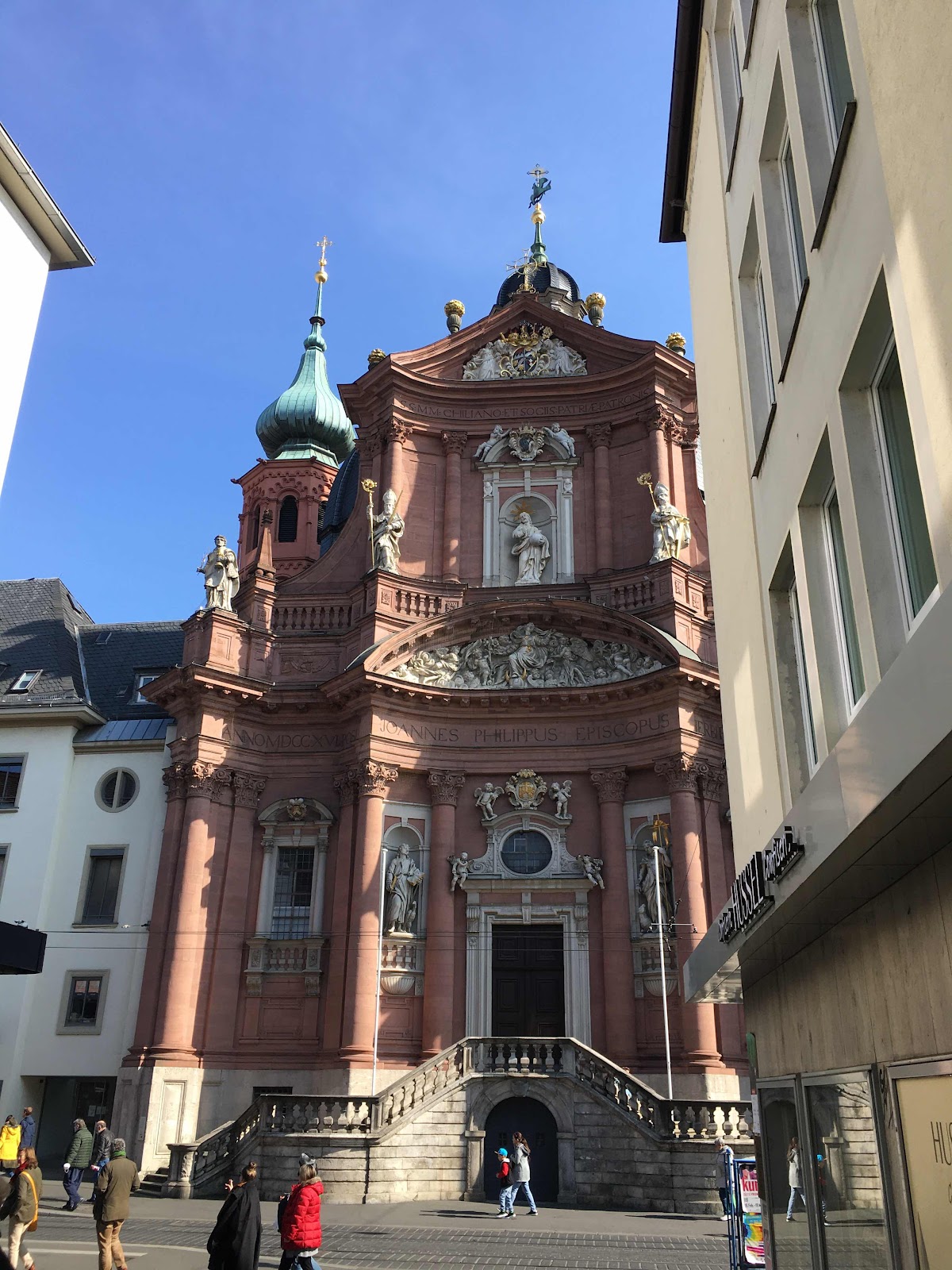St Kilian and Friends!
Let’s head off into the centre of Würzburg, this is the Neumünster Church, and although dedicated to two St Johns, it is built on the site of St Kilian (and two other friends) martyrdom.

The original church was Romanesque from 11th C and this magnificent red sandstone façade dates from 1710. The sandstone came from a now disused quarry situated where I live.

The original church was Romanesque from 11th C and this magnificent red sandstone façade dates from 1710. The sandstone came from a now disused quarry situated where I live.
St Kilian and his mates Totnan and Kolonat came from Ireland to convert the Franks and were either stabbed or executed in 689 AD, so the legend goes. The hagiography of St Kilian, is like with many saints, really only present since the 12th C and although the legend has him getting embroiled in an argument over the legality of an aristocratic marriage, leading to him being stabbed, we really don’t know if this is the truth. Without seeming disrespectful, he had a pretty boring death in comparison to St Callixstus (chucked down a well, as I already mentioned a couple of years ago) or another local saint St Vitus (or Veit the patron saint of Veitshöchheim) he was boiled in a big vat of oil, which he miraculously survived and was carried home by angels only to die later.
The church actually has a huge dome, built over the site of the Irish born Kilian's martyrdom/ grave and the relics of the 3 missionaries (Kilian, Kolonat and Totnan) can be seen in a crystal shrine in the cathedral of Würzburg.
This is my second time living here but I have to confess I don’t remember popping in to the Neumünsterkirche or the cathedral so I must do that, especially as they were Celts.
The cult of St Kilian has stood the test of time, you pray to him if you rheumatism or gout and here in Würzburg, he is the name giver of a huge fair ''lKiliani'' which takes place around the 8 July, his saint's day. St Kilian is also the patron saint of a town in Ireland … Tuosist and where else could it be, yes in County Kerry!
Comments
Post a Comment